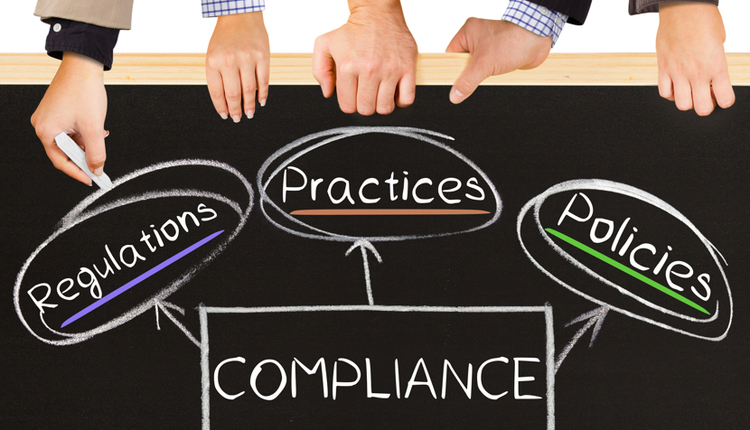
Image by: Butsaya, ©2016 Getty Images
So, what’s so important about documents versus records in today’s digital enterprises? First, it’s important to understand that documents do not become records until they are declared a record. When a document is first created, it is under its author’s control and typically goes into a workflow, put simply—a document life cycle. In most corporate document workflows, the document is eventually used for a business decision or its context and content matches a line item on the corporate retention schedule and becomes a record. When this occurs, it “jumps tracks” into the record life cycle.
Once a document is declared a record, it leaves the author’s control and lives under corporate control until it is no longer required for retention, at which point it is destroyed. Of course, not all documents graduate to the position of official corporate records. For those that do not, the document is generally retained through its active use and then destroyed according to an organization’s data and information retention policies. These non-record documents will not be listed in a corporate records retention schedule, because they are not records—they were never used for legal, fiscal, operational, historical, or business needs and decisions.
Pretty cut and dry, right? Not really.
Typically, a document’s life cycle involves the following key phases:
- Creation
- Management
- Storage
- Retrieval
- Distribution
- Disposal
Digital preservation and archiving is a key differentiator between document and record life cycles today. Starting with creation and leading up through retrieval and distribution, the life cycle phases between documents and records are tightly aligned. While the records life cycle adds retention and archiving as a phase, it also has defensible destruction in line with the document life cycle.
The digital archiving and preservation phase is a multi-layered process, teeming with everything from provenance and authentication practices, to chain of custody and accountability, to format transformations—all designed to keep information legitimate, useful, and, if required for long-term retention, preserved.
What kind of documents typically become these types of records? These are standard operating procedures (SOPs), corporate intellectual property records, corporate financial records, human resources (HR) records, legal contracts, and an army of other records that a company is duty-bound to retain based on its corporate retention schedule. These document records move from active to inactive—but always remain valuable. They must be preserved in a way that allows them to retain their chain of custody and carry appropriate preservation metadata so that they can be easily retrieved by persons with a legitimate, authorized right to view them.
Afterthought no longer
Today, archiving is no longer an afterthought and is on its way to becoming mainstream. With the data explosion of recent years, data archiving has come to the forefront as organizations work to maintain hosts of systems that produce diverse types of data. Currently, according to studies, more than 30 billion documents are used each year in the United States. All of these documents were created with key parameters addressed: name, date of creation, name of author, keywords and other metadata values to facilitate access and retrieval, and also workflow information (approvers, signatures, expiration information, and even long-term archival information). A large number of these documents will be declared records and many will become inactive but still have a long-term retention requirement. In enterprise archiving, the final form of information, the record, is transferred from operational business applications to a central enterprise archive. Once this information has been archived, it is available to everyone who needs it. The enterprise archive can support a wide spectrum of business applications as well as the various record types that they generate.
Enterprise archiving benefits businesses and government agencies with five critical advantages:
- Ensuring regulatory compliance for data retention, data immutability, and audit trails
- Improving performance and productivity of current business applications
- Making archived records widely available and easy to retrieve by authorized users
- Removing the burden and complexity of maintaining obsolete systems solely for their data
- Reducing information technology (IT) costs and time for back-up, upgrades, license, and support costs and database tuning
To operate efficiently, organizations must gain control and governance of their IT portfolios and establish a solid digital records archiving strategy with an optimized IT infrastructure to manage content, ensuring all required records are accessible and actionable.
With trends in information storage moving more to cloud computing, big data, and information protection, organizations require complete solutions for enterprise archiving that are built to allow the user to find the information they need—regardless of the application that created it.
It's exciting to see that archiving structured, data-centric records alongside unstructured, document-centric records is becoming a reality for many organizations and delivering tangible benefits back to their bottom line.
Archiving today accomplishes critical information governance goals, such as records identification and classification, storage and cost optimization, data scalability, user access, and more, providing a logical final destination for the vital information that powers today’s digital enterprise. Keep in mind, state and federal regulations will play a significant role in determining a firm’s information archiving best practices, but establishing a policy that can be applied to various types of information, like documents, data, and records, and that can provide solid guidance for staff members in a wide range of situations can boost productivity and help an enterprise maintain compliance throughout the organization.
Compliance is a double-edged sword: On one blade is retention compliance and assuring information is retained to address legal, regulatory, and business needs. On the other blade is destruction compliance—an enterprise must destroy information once those needs are no longer in place. For records, organizations can follow a corporate records retention schedule. For documents and data, the requirements are a bit more obscure and are generally applied according to active use.
With data storage decreasing in costs, there is pressure to keep information longer and make it available for informatics and analytics. Whatever your company’s approach to data and document retention, efforts must be taken to apply a life cycle that can be practically followed and a governance model to assure and demonstrate consistent control.
Brett Claffee is a Principal Consultant of Information Governance and Compliance from Paragon Solutions' Life Sciences Practice and has over 15 years of pharmaceutical industry experience in areas ranging from discovery research and BioPharm GxP manufacturing to records and document management. For more information, visit www.consultparagon.com or follow @consultparagon.
















